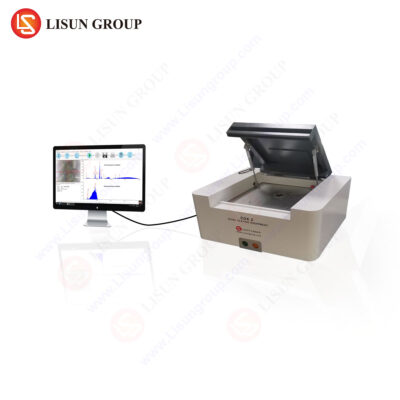
What is a RoHS Tester?
A RoHS tester is a specialized device used to ensure compliance with the European Union’s RoHS (Restriction of Hazardous Substances) directive. This directive aims to limit the use of specific hazardous substances in electrical and electronic products.
The primary function of a RoHS tester is to measure the levels of the following six hazardous substances in products:
• Lead (Pb): Commonly used in solder alloys for electronic components.
• Cadmium (Cd): Found in batteries, pigments, and plastics.
• Mercury (Hg): Previously used in switches and lamps.
• Hexavalent Chromium (Cr6+): Used for anti-corrosion coatings on metals.
• Polybrominated Biphenyls (PBB): Added to plastics as flame retardants.
• Polybrominated Diphenyl Ethers (PBDE): Another common flame retardant.
Importance of RoHS Testing
With increasing global environmental awareness, countries have imposed stricter regulations on hazardous substances in electrical and electronic products. The EU’s RoHS directive is a critical environmental regulation that ensures products sold in the market contain minimal amounts of specific hazardous substances. Using a RoHS tester, manufacturers can confirm that their products comply with these regulations, avoiding legal risks and enhancing market competitiveness.
The general steps for using a RoHS tester include:
• Sample Preparation: Prepare the product or material samples to be tested, ensuring they are clean and free from contaminants.
• Instrument Calibration: Calibrate the tester according to the specific detection requirements to ensure accurate data.
• Testing Process: Place the sample in the tester, start the testing procedure, and the device will automatically analyze the levels of hazardous substances in the sample.
• Results Analysis: After testing, the device generates a detailed report, including the specific content of each hazardous substance.
• Technical Principles of RoHS Testers
• RoHS testers detect hazardous substances in electronic products. Most common RoHS testers use X-ray fluorescence (XRF) analysis technology, which can be classified into Energy Dispersive XRF (EDXRF) and Wavelength Dispersive XRF (WDXRF). Due to its simpler principle and structure, EDXRF is widely used in the market.
X-Ray Fluorescence Analysis Technology
Characteristic X-Rays: RoHS testers use X-rays or gamma rays emitted by a radioactive isotope source or an X-ray generator to interact with the atoms in the sample. When inner-shell electrons are ejected and outer-shell electrons fill the vacancies, characteristic X-rays with specific energies are emitted. These are unique to each element and can be used to identify their presence.
Element Content and X-Ray Intensity: The energy of characteristic X-rays varies between elements, enabling qualitative analysis. The intensity of these X-rays is proportional to the element’s concentration, allowing for quantitative analysis.
Applications and Regulations
In China, RoHS testers are extensively used in the production, sale, and import of electronic information products to control and reduce environmental pollution. However, this regulation does not apply to export products.
EDX-2A_RoHS Testing Equipment
RoHS testers are high-precision instruments used to detect the content of hazardous substances in electronic products. Their main technical specifications are:
• Element Range: From sulfur (S) to uranium (U)
• Content Range: 1 ppm to 99.99%
• Detection Limits: For hazardous elements (Cd/Pb/Cr/Hg/Br), the detection limit can reach up to 1 ppm
• Measurement Time: 60 to 200 seconds
Detectable Elements
RoHS testers measure the content of elements specified by RoHS standards, including:
• Lead (Pb): Below 1000 ppm
• Mercury (Hg): Below 1000 ppm
• Cadmium (Cd): Below 100 ppm
• Hexavalent Chromium (Cr6+): Below 1000 ppm
• Polybrominated Biphenyls (PBB): Below 1000 ppm
• Polybrominated Diphenyl Ethers (PBDE): Below 1000 ppm
RoHS testers are widely used across various industries to ensure products meet environmental regulations and reduce pollution. Major application areas include:
• Professional Testing Institutions
• Electronics Manufacturing
• Toy and Entertainment Equipment Manufacturing
• Gift and Jewelry Manufacturing
• Furniture and Coating Manufacturing
• Textiles and Leather Manufacturing
• Large Household Appliances Manufacturing
• Small Household Appliances Manufacturing
• Audio-Visual Equipment Manufacturing
• Machinery and Tools Manufacturing
Conclusion
RoHS testers are extensively used across various industries to ensure products comply with the RoHS directive. Through rigorous quality control and testing processes, industries can minimize the use of hazardous substances, protect the environment, and enhance the market competitiveness of their products.
https://www.lisungroup.com/news/technology-news/principles-technical-indicators-and-wide-applications-of-rohs-tester.html


Comments
Post a Comment